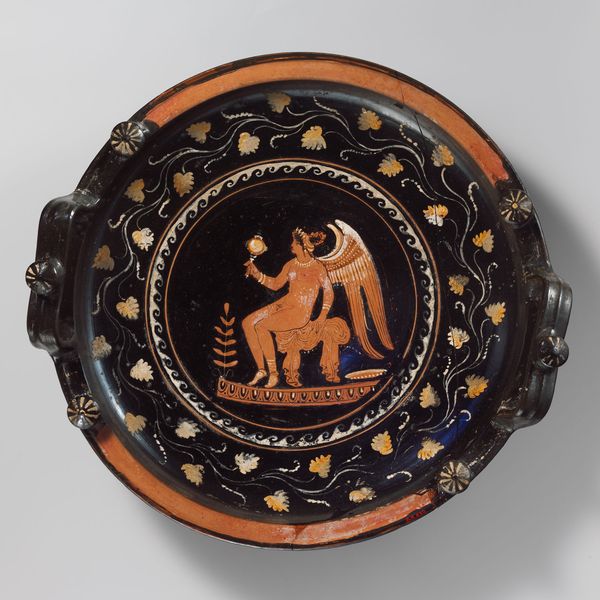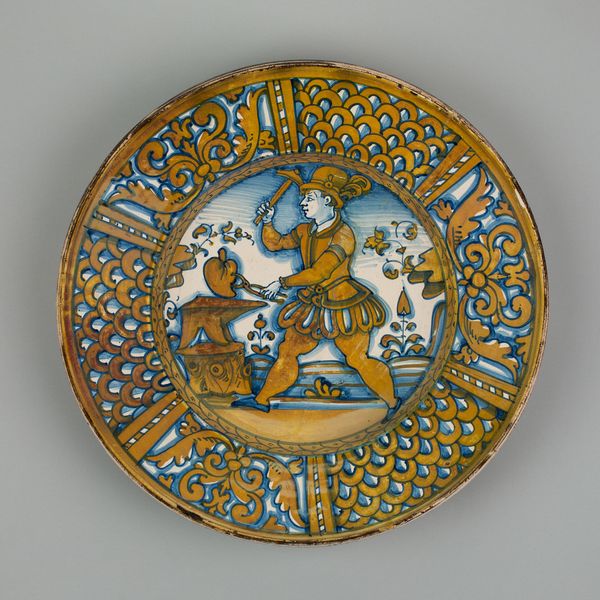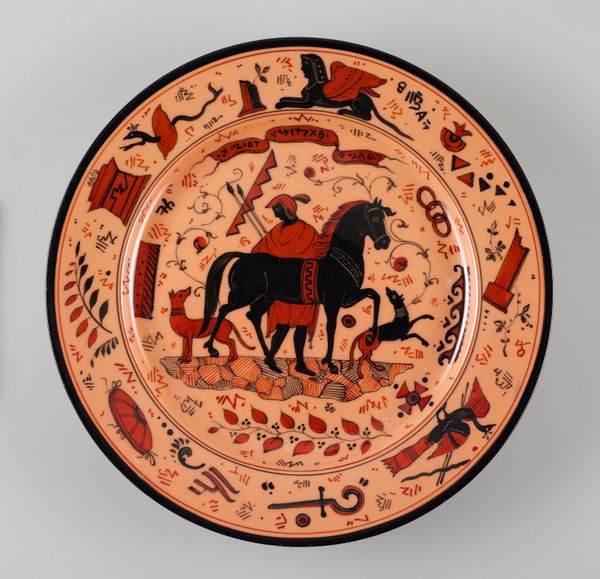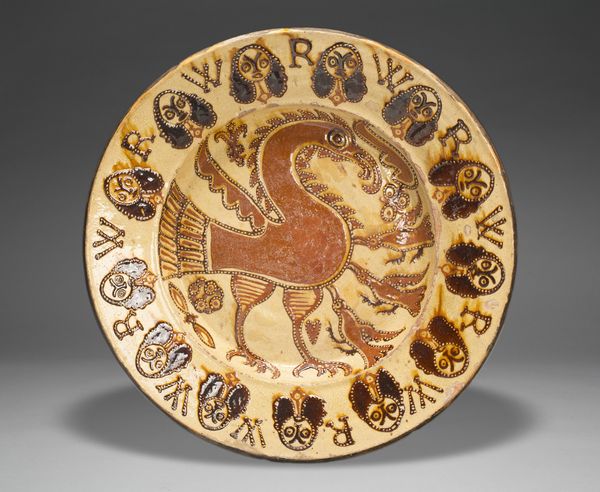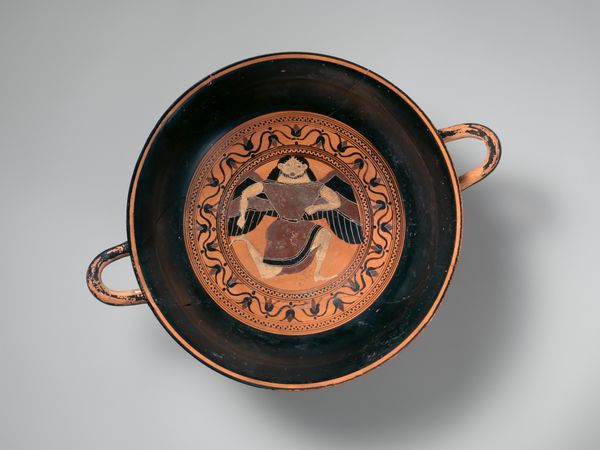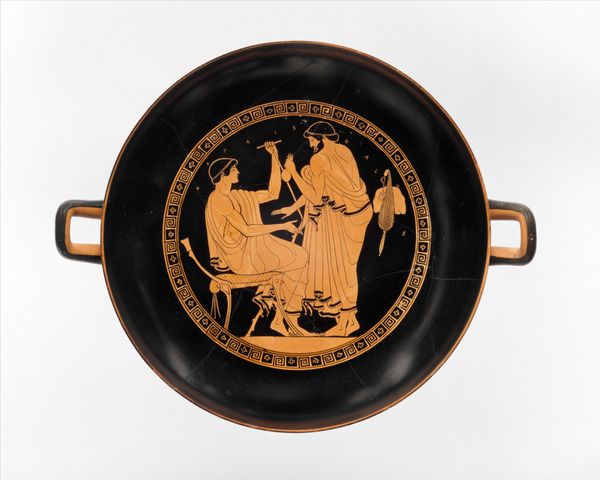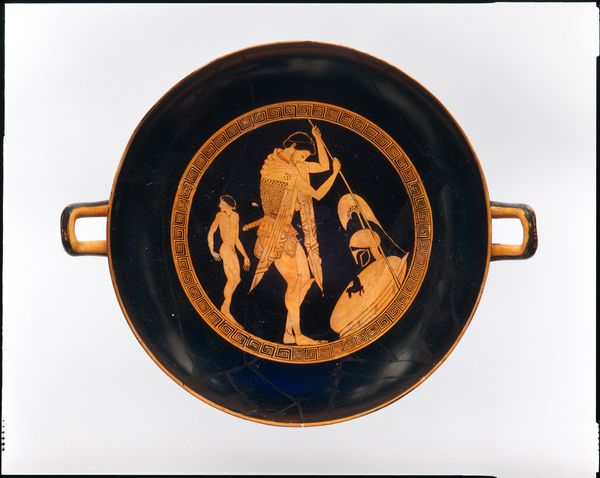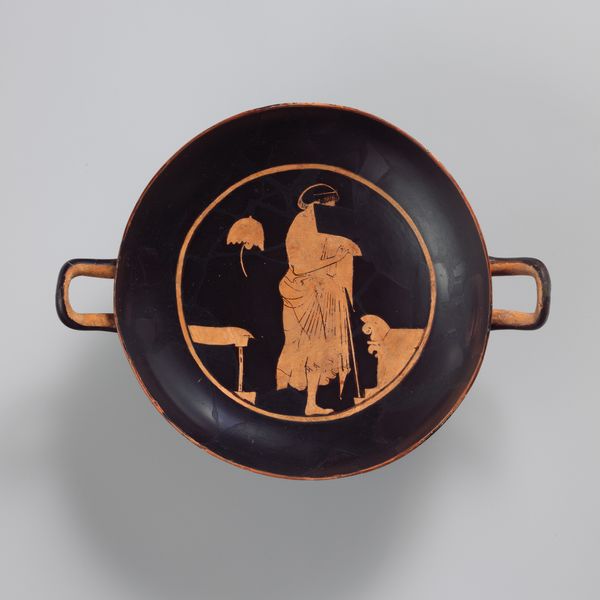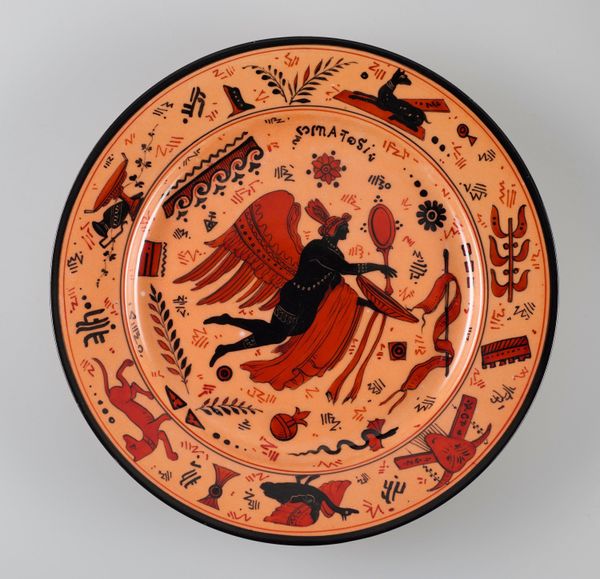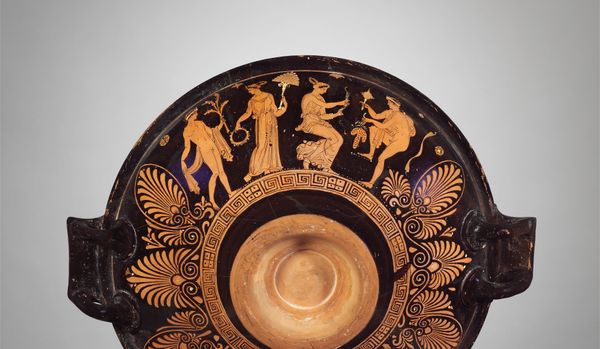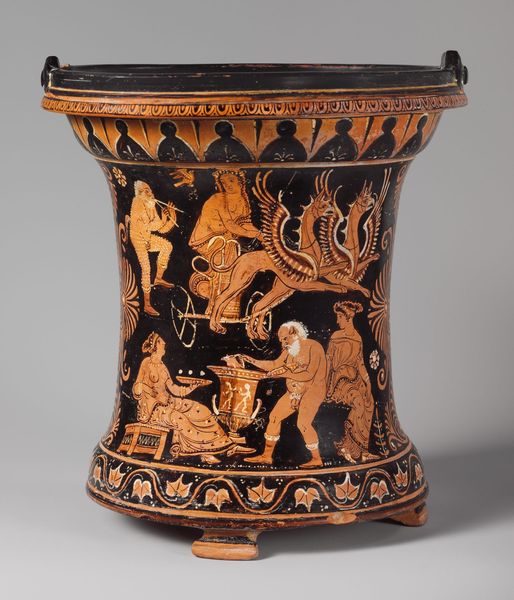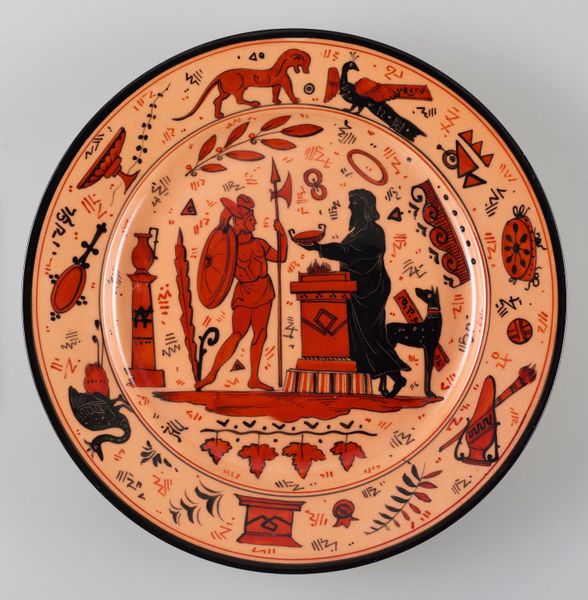
ceramic, earthenware
#
decorative element
#
greek-and-roman-art
#
landscape
#
ceramic
#
bird
#
figuration
#
earthenware
#
horse
#
ceramic
#
men
#
earthenware
Dimensions: H. 6 1/2 in. (16.5 cm); diameter 22 13/16 in. (58 cm)
Copyright: Public Domain
This terracotta dish was made by the Stuttgart Group, a collection of Athenian vase painters, probably during the 4th century BC. What we see depicted here is the abduction of Europa by Zeus, disguised as a bull. The image creates meaning through visual codes and cultural references deeply embedded in Greek society. The presence of Zeus underscores the significance of mythology in their culture and the role of divine intervention in human affairs. The dish probably served a ritual function. The Stuttgart Group's work also comments on the social structures of its time. By depicting scenes from mythology, they reinforce the values and beliefs of Greek society. What does this abduction scene tell us about the status of women? We can understand this better by consulting classical texts, archaeological records, and studies of ancient Greek social customs.
Comments
No comments
Be the first to comment and join the conversation on the ultimate creative platform.
